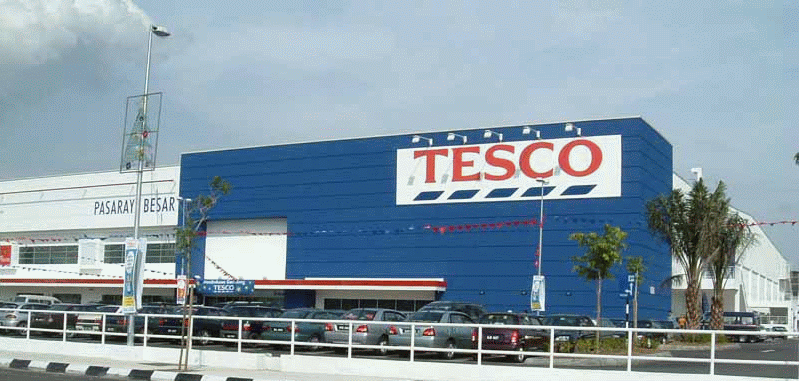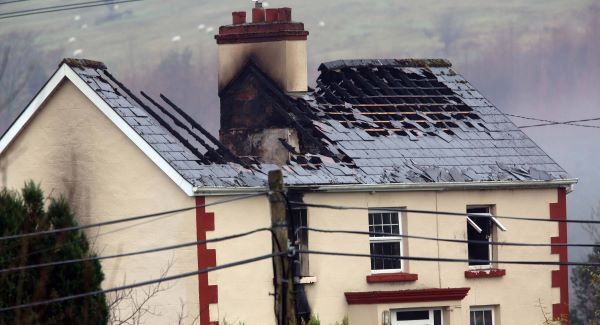New Irish property Tax Bill gives Revenue more powers to collect it


The Irish Government has today published the Finance Bill 2012 (Local Property Tax), to give effect to the property tax announced in the budget. The new Bill is expected to be brought through the Dáil towards the end of next week.
The Bill establishes who is liable to pay the new tax and how much they will pay. It also gives new powers to the Revenue Commissioners to collect it.
The Finance Bill bill establishes May 1 2013 as the “valuation date”. This will establish the value of the property until November 2016, when a new valuation will be required.
This means the tax to be paid will remain the same for periods of three years.
May 2013 is also the “liability date”, so people who own property on that date will be liable to pay tax on that property. The liability date for each year after that will be November 1.
People who have a liability to pay the property tax must make a return to the Revenue Commissioners by May 7 2013 by post or May 28 2013 by electronic filing.
The tax return must include a self assessed value of the property, and either payment of the tax, or the selection of a payment method.
These can include the option of having the tax deducted at source by employers under the PAYE system, or a request to the Department of Social Welfare to deduct the tax at source from welfare payments. Other payment options include direct debit and cash payment through a wide variety of retail outlets. Taxpayers can also elect to pay through the credit union system.
Failure to pay the tax by July 1 2013, or by January 1 in each subsequent year will result in the application of late payment interest at 8%.
Failure to make a return or to make a false statement in a return in an attempt to reduce the amount of the tax due are liable to penalties of up to €3,000.
Section 151 of the new Bill obliges certain people or organisations (such as utilities companies) that have lists of property owners or billing details for electricity or gas meters, to make this information available to the Revenue Commissioners if requested.
Failure to comply with such a request can result in a daily fine of €100 until the order is complied with. This appears to be an attempt to overcome data protection concerns which some utilities companies have about sharing their considerable databases with the Revenue Commissioners.
The Bill abolishes the existing €100 household charge from January 1, 2013, and caps the amount of arrears liability to €130 on amounts paid by 30 April 2013. But if the household charge has not been paid by July 2013, it will be treated as unpaid local property tax of €200, and added to the outstanding amount of tax due on that property.
Unpaid or deferred Local Property Tax will remain as a charge against each property. It is liable to be paid when the property is sold by the seller – even if the property is sold or transferred for no payment. If the tax is not paid at the point of sale, the liability for the unpaid tax passes to the new owner of the property.
The Revenue Commissioners are required to establish a register of all residential property in the state and its ownership, and assign a unique identifier number to each property.
All persons liable to pay the property tax will be required to register with Revenue, by sending them details of the person or persons liable and the property concerned. This obligation to register will be satisfied by making a tax return.
Section 38 of the Bill links the submission of a local property tax return with a return for income tax and corporation tax. If a local property tax return is not submitted on time, the liable person’s income tax and corporation tax returns are also treated as not being submitted on time – even if they have been. This results in the surcharging of the property tax due on the persons income and corporation tax returns.
People who own more than one property will be required to make a return by electronic means only.
The Bill also gives Revenue powers to require statements from third parties such as management and letting companies, lessees or occupiers of property, giving details about the property including who actually owns it.
PAYE taxpayers can opt to have their property tax deducted at source by their employers. If an individual does not opt for this method of payment and does not pay their tax, the Revenue Commissioners can require their employer to deduct the tax due at source.
The Revenue Commissioners will also be given power to direct the Minister for Social Protection to deduct the property tax from a liable persons welfare payments. Welfare recipients can also elect to have the tax deducted by the Department of Social Protection.
Revenue can also come after money due under payments to farmers and food producers from the Department of Agriculture, Food and Fisheries.
And the Minister for Finance is enabled to make orders deducting at source the property tax from any other form of payment from a government department or a state agency.
Because the Local Property Tax will be treated like any other tax due for collection by the Revenue Commissioners, the full range of revenue powers under the 1997 Tax consolidation Act will apply to its collection. This may make those who do not pay and who are subject to settlement proceeding liable to having their name and address published on the Revenue Defaulters List.
Non-payment of the tax will also prevent the issue of a tax clearance certificate.
Irish people may have to grab a shovel & share costs of repairing our roads


The Irish public may be asked to get out their shovels and wallets if they want their local road repaired.
Transport Minister Leo Varakar says a new scheme will allow people to help share the cost of repairing local roads – or do it themselves – from next year.
Between €5m and €10m will be made available from the Government, with further funding to be sourced from the public.
He added it would allow minor works such as potholes to be repaired which might otherwise not be addressed.
“There are proposals to introduce a new community involvement scheme for regional and local roads on a pilot basis in 2013 involving an exchequer contribution of between €5m and €10m,” he said.
“This revised scheme should allow communities and the State to share the cost, or the workload, involved in repairing minor roads which wouldn’t otherwise be improved.”
Similar schemes are already in place in local authorities.
Laois County Council has a Community Involvement in Roadworks Scheme, which applies to all public roads in the county.
This scheme allows residents who want to have road improvements carried out to part-fund the cost of the works jointly with the council.
In Roscommon, at least 25% of the cost must be met by local residents who want the work carried out.
The Department of Transport said details, which were still being worked out, were due to be announced in a few weeks.
A spokesman said the community element of the scheme was not yet clear, but money would be available to local authorities to employ local contractors.
“There used to be a local improvement scheme, and it’s a similar idea where there’s community involvement but it’s being developed,” a spokesman said.
“It’s being looked at, and funding is being provided. It’s very early days.”
The scheme is expected to apply to local roads, including country lanes and boreens.
Meanwhile, a €22m new road improvement scheme from Carrick Bridge to Clonfad Road (Dalystown) in Co Westmeath was opened yesterday.
The N52 improvements cover 5.6kms of single carriageway, and will reduce travel times between both areas by about one-third.
Mr Varadkar said it would “significantly” improve road safety, adding that the work was completed three months ahead of schedule.
He added that four road schemes would be completed next year: the Belturbet bypass, Cork Southern Ring Road interchanges upgrade, Tralee bypass and a section of the N4 in Co Westmeath.
Tesco pays St Vincent De Paul €150,000 through court fine on misleading Aldi claims



Tesco Ireland has promised not to display misleading in-store price comparisons with its rival Aldi in future.
The supermarket giant agreed to pay €150,000 to Aldi and gave a High Court undertaking not to display inaccurate comparisons in its stores.
This includes comparing products of a similar nature but with significant differences such as dry dog food compared with moist dog food.
It also prevents price comparisons of completely different products such as marmalade and tuna chunks.
The undertaking also prevents comparisons of alcohol of a different vintage, alcohol strength, colour or country of origin.
Where the products being compared are of a different weight, Tesco will also have to display accurate pro-rata weight/price calculations.
Tesco will also not be allowed compare prices on products that have not been sold in Aldi stores in the last fortnight, and will also have to indicate if products being compared have the Bord Bia Quality Assurance mark.
The settlement was agreed before Mr Justice Peter Kelly in the Commercial Division of the High Court, just days ahead of a hearing.
Aldi said that it would donate the €150,000 payout to the St Vincent de Paul charity.
The discount supermarket chain said it had taken High Court proceedings for trademark infringement against Tesco after repeatedly bringing the matter to Tesco’s attention without success.
“Aldi is, of course, fully in favour of comparative advertising, but any comparative advertising must be accurate, fair and cannot mislead the consumer,” Aldi said.
“The effect of today’s undertakings is that consumers can expect and demand clear, transparent and accurate information on comparative advertising to enable them to make properly informed decisions about what they buy and who they buy from,” said Aldi Ireland buying director Niall O’Connor.
Consumer
In a statement, Tesco Ireland said that the settlement endorsed comparative advertising, which was good for the consumer.
“The settlement also sets down clearly for the first time the ground rules for how comparative advertising can happen,” it said.
“It is an important part of the competitive environment in retailing and we are pleased that it can continue within the parameters set out.
“Tesco Ireland accepts the principles set down in the settlement and will continue to drive competition and innovation in the Irish market,” it added.
Obesity patients in Ireland are now younger and heavier than before
Patients referred to the country’s only publicly funded weight management clinic are now more obese and younger than those sent for treatment just two years ago.
But despite the growing obesity crisis, they must wait three to four years before they see a specialist at St Columcille’s Hospital in Loughlinstown, Dublin.
A new study shows that the average age of referral is now 43 years while the body mass index (BMI) is 46. A BMI of over 30 is regarded as obese.
The authors of the study, including obesity expert Dr Donal O’Shea, pointed out that Ireland has the fourth-highest prevalence of overweight and obese men in the European Union and the seventh highest among women.
The study comes in the wake of the government decision not to back a sugar tax on fizzy drinks in the Budget, despite support for the move from Health Minister James Reilly.
The authors said they were concerned that fewer men were being sent for treatment despite the fact that men have a greater prevalence of obesity and related illnesses than women.
“It is also worrying that since our last review over two years ago the average age of patients has decreased from 44 to 43 while the average BMI has increased from 44 to 46.
“This equates to approximately a 6kg increase in weight. It is already known that the prevalence of obesity has increased by 67pc overall between 1990 and 2000.”
These findings suggest that Irish people are becoming more obese at a younger age.
New night-time very stunning views of the Earth unveiled by NASA satellite

 NASA satellite reveals new nighttime images of Earth as above.
From single pinpricks of light to networks of glowing galaxies, planet Earth glitters at night, reveals a new global composite image built using cloud-free night images from a new NASA and National Oceanic and Atmospheric Administration (NOAA) satellite.
Scientists have unveiled what US space agency NASA has called an unprecedented look at planet Earth at night, showing the glow of natural and human-built phenomena across the planet in detail.
With a new sensor on board the NASA-NOAA Suomi National Polar-orbiting Partnership (NPP) satellite launched last year, scientists can now observe Earth’s atmosphere and surface during night-time hours and use the information they obtain to help forecast weather conditions for airports, as just one example.
The new sensor, the day-night band of the Visible Infrared Imaging Radiometer Suite (VIIRS), is able to detect a more complete view of storms and other weather conditions, such as fog, that are difficult to pick up with infrared, or thermal, sensors. Night is also when many types of clouds begin to form and the sensor can capture images on nights with or without moonlight.
The new images are providing researchers with data for various previously unseen or poorly seen events. For instance, the day-night band observed Hurricane Sandy, illuminated by moonlight, making landfall over New Jersey on the evening of 29 October. Night images also showed the widespread power outages after the storm.
“For all the reasons that we need to see Earth during the day, we also need to see Earth at night,” said Steve Miller, a researcher at NOAA’s Colorado State University Cooperative Institute for Research in the Atmosphere. “Unlike humans, the Earth never sleeps.”
The day-night band produces an image by repeatedly scanning a scene and resolving it as millions of individual pixels, NASA said. Then, the day-night band reviews the amount of light in each pixel. If it is very bright, a low-gain mode prevents the pixel from oversaturating. If the pixel is very dark, the signal is amplified.
“It’s like having three simultaneous low-light cameras operating at once and we pick the best of various cameras, depending on where we’re looking in the scene,
Chocolate – it’s the guilt that makes it so delicious, study tells us
NASA satellite reveals new nighttime images of Earth as above.
From single pinpricks of light to networks of glowing galaxies, planet Earth glitters at night, reveals a new global composite image built using cloud-free night images from a new NASA and National Oceanic and Atmospheric Administration (NOAA) satellite.
Scientists have unveiled what US space agency NASA has called an unprecedented look at planet Earth at night, showing the glow of natural and human-built phenomena across the planet in detail.
With a new sensor on board the NASA-NOAA Suomi National Polar-orbiting Partnership (NPP) satellite launched last year, scientists can now observe Earth’s atmosphere and surface during night-time hours and use the information they obtain to help forecast weather conditions for airports, as just one example.
The new sensor, the day-night band of the Visible Infrared Imaging Radiometer Suite (VIIRS), is able to detect a more complete view of storms and other weather conditions, such as fog, that are difficult to pick up with infrared, or thermal, sensors. Night is also when many types of clouds begin to form and the sensor can capture images on nights with or without moonlight.
The new images are providing researchers with data for various previously unseen or poorly seen events. For instance, the day-night band observed Hurricane Sandy, illuminated by moonlight, making landfall over New Jersey on the evening of 29 October. Night images also showed the widespread power outages after the storm.
“For all the reasons that we need to see Earth during the day, we also need to see Earth at night,” said Steve Miller, a researcher at NOAA’s Colorado State University Cooperative Institute for Research in the Atmosphere. “Unlike humans, the Earth never sleeps.”
The day-night band produces an image by repeatedly scanning a scene and resolving it as millions of individual pixels, NASA said. Then, the day-night band reviews the amount of light in each pixel. If it is very bright, a low-gain mode prevents the pixel from oversaturating. If the pixel is very dark, the signal is amplified.
“It’s like having three simultaneous low-light cameras operating at once and we pick the best of various cameras, depending on where we’re looking in the scene,
Chocolate – it’s the guilt that makes it so delicious, study tells us
Researchers have found that women are more likely to enjoy food if they think it is bad for them.
One might assume a woman’s enjoyment of sweet treats like chocolate would be marred by the depressing mantra, “a minute on the lips and a lifetime on the hips.”
But according to a new study, the very guilt associated with indulging in forbidden foods can in fact enhance women’s enjoyment of them.
Researchers found that the perception of the food as somehow “sinful” meant the woman was “primed” to take more pleasure in it.
When women know the food is not bad for them, they could find it less tasty as their “expectation of pleasure” is lowered beforehand, it was suggested.
In the study, the researchers split 40 women into two equal groups, one of which was shown healthy living magazines featuring images of people looking fit and slender.
The other group looked at magazines whose pictures did not relate to wellbeing.
When all 40 women were given a chocolate bar afterwards and asked to rate their enjoyment of it, those who had read the healthy living magazine said they liked the sweets 16% more than those who did not.
Lead researcher Kelly Goldsmith, of the Kellogg School of Management at Northwestern University in Chicago, said the findings showed that “experiencing
the emotion of guilt can increase pleasure”.
She said: “If you advertise your product as being ‘guilt-free’, what it could implicitly do is lower taste perception by lowering the expectation of pleasure. If you take the guilt out of it, people might not expect it to be as good.
“Let people benefit from the intrigue and pleasure and enjoy their experience more.”
But she also warned that more harmful guilty pleasures such as smoking and drinking could be affected by the same principle, the Daily Mail reported.
Three family members die in Co Leitrim house fire


Three family members have died in a house fire (picture above) in Co Leitrim overnight.
The bodies of a couple Desmond McDonald, 75, his wife Patsy, 77, and their daughter Patricia, 34, were removed from the scene at Lisnabrack.
It is understood that someone driving past the house saw the fire and called the emergency services at 2.20am.
They found the family, who were well known in the area, in a search of the two-storey house.
The couple had spent many years in America and came back to Leitrim to retire.
It is understood the fire may have started in the kitchen and that the family were asleep at the time.
Gardaí have been carrying out a forensic examination at the scene all day but they do not believe there is anything suspicious about the tragedy which has shocked local people.
The bodies have been taken to Sligo General Hospital where post mortem examinations will be carried out.



To maximize your profit Choose the best CPA firm in San Antonio. If you are searching for the accounting firms in san antonio tx then Call Now: (210) 701-1040 & Get Free Quote from uhlenbrock the best accounting firm in San Antonio for you
ReplyDelete